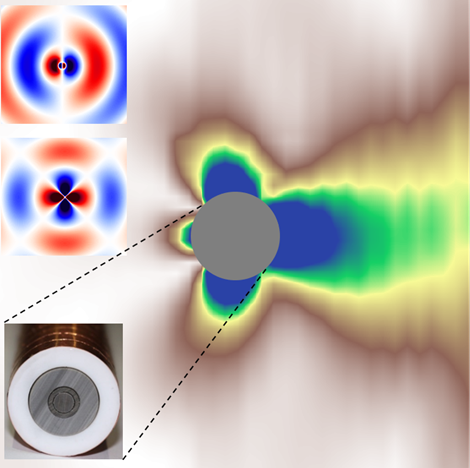Dr. Qian Chao’s research paper “Experimental Observation of Superscattering” is published in the Physical Review Letters, which is the top journal of physics, selected as the Editor’s suggestion and reported in highlight by Physics.
Why is the sea blue? Why are the feathers of peacock colorful? These universal phenomena can be explained by light scattering. As early as 1871, Rayleigh, Raman, Mie and other scientists had worked on the light scattering. For over a hundred years, to manipulate light scattering has been a goal for human-beings to pursue. Among the researches, enhancing scattering of particles has prosperous application prospects in the fields of sub-wavelength optics, photovoltaic power generation and biosensing imaging for that it can improve optical resolution, solar cell conversion efficiency and surrounding medium sensitivity. In 2010, Prof.ZhichaoRuanand Prof. Shanhui Fan of Stanford University in the United States proposed a method to significantly increase the scattering cross section of sub-wavelength objects----superscattering, using multi-layer metal-medium nano-columns to induce oscillations of higher-order electric moments in the structures, including quadrupoles, to break through the supposed limit in scattering cross-section. In terms of visual effects, people are expected to see images larger than the physical size, but they cannot see the objects in the geometrical sense. However, since superscattering is very sensitive to the size and loss of nanostructures, it is a great challenge to observe the superscattering phenomenonsuccessfully.

In the paper, the multi-frequency superscattering phenomenon has been observed for the first time in the microwave section by using a sub-wavelength layered column composed of super-surface-medium (Fig. 1). The super-surface formed by the periodic arrangement of the metal can support the low-frequency surface wave, and the dispersion characteristics of the surface wave can be freely adjusted while the loss is small. By optimizing the super-surface structure parameters, the scattering peaks of the multi-angle momentum channel are superimposed on each other so that the total scattering cross-section is greatly enhanced, far exceeding the metal column of the same size. The work demonstrates the phenomenon of superscatteringfrom near-field electric field distribution (fig. 1) and far-field radar cross-section. This study is essential for the adjust of electromagnetic waves and light scattering at the micro-nanoscale.
Physics reported the research work as A Metamaterial for Superscattering Light. In the report, Prof. Yongmin Liu, a well-known scholar in the field of nano-optics and from the Northeastern University of the United States, emphasized the importance of this work in the field of basic discipline research and applied research. For basic research, the combination of super-scattering and random media will help to explore more interesting physical phenomena. In the field of applied research, high efficiency and high directional super-scattering antennas will have a profound impact on the fields of wireless communication, data transmission and remote sensing. This work was also highlighted by Physicsworld with the title Metamaterial enables superscattering to be observed for the first time.
